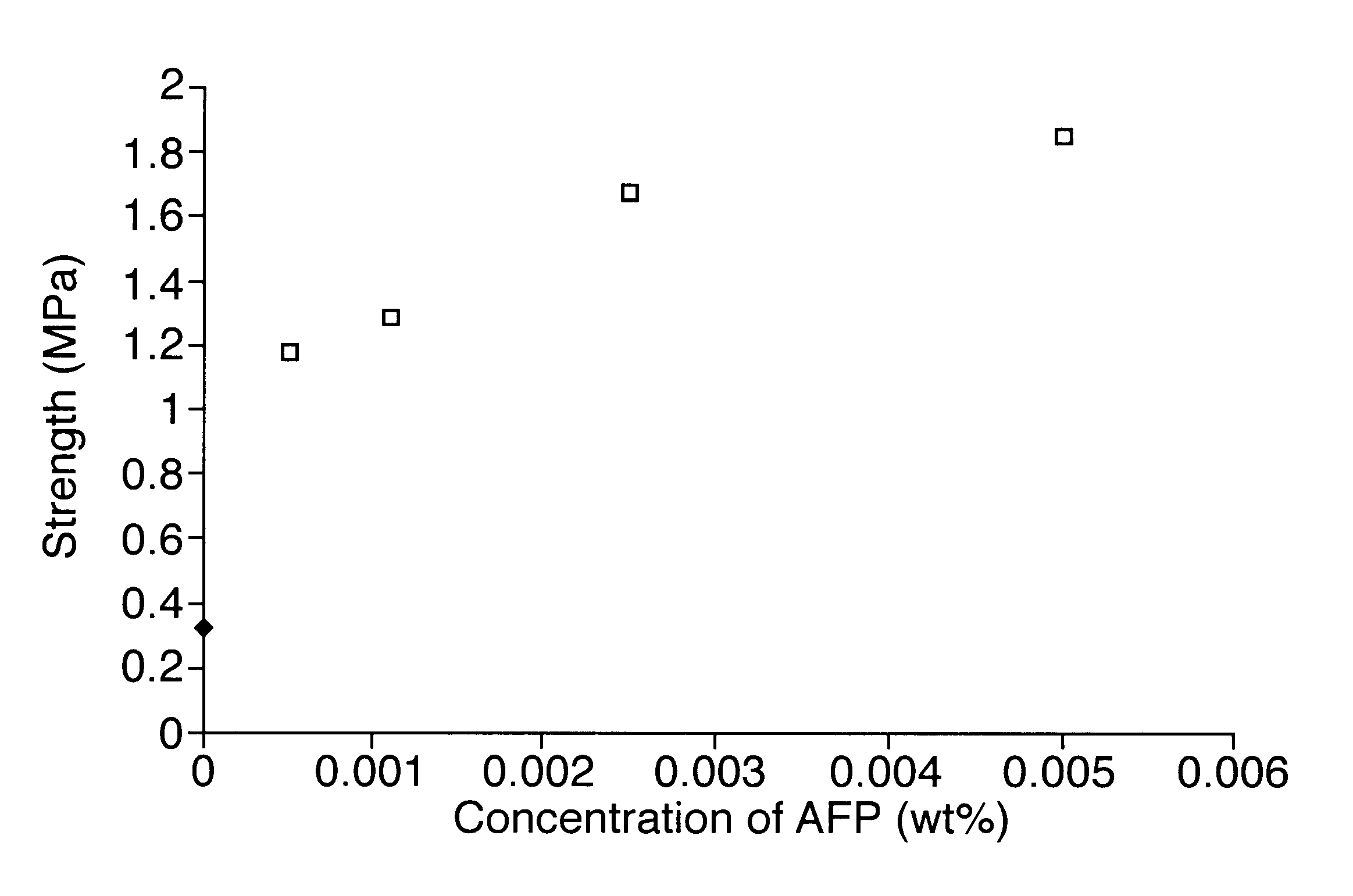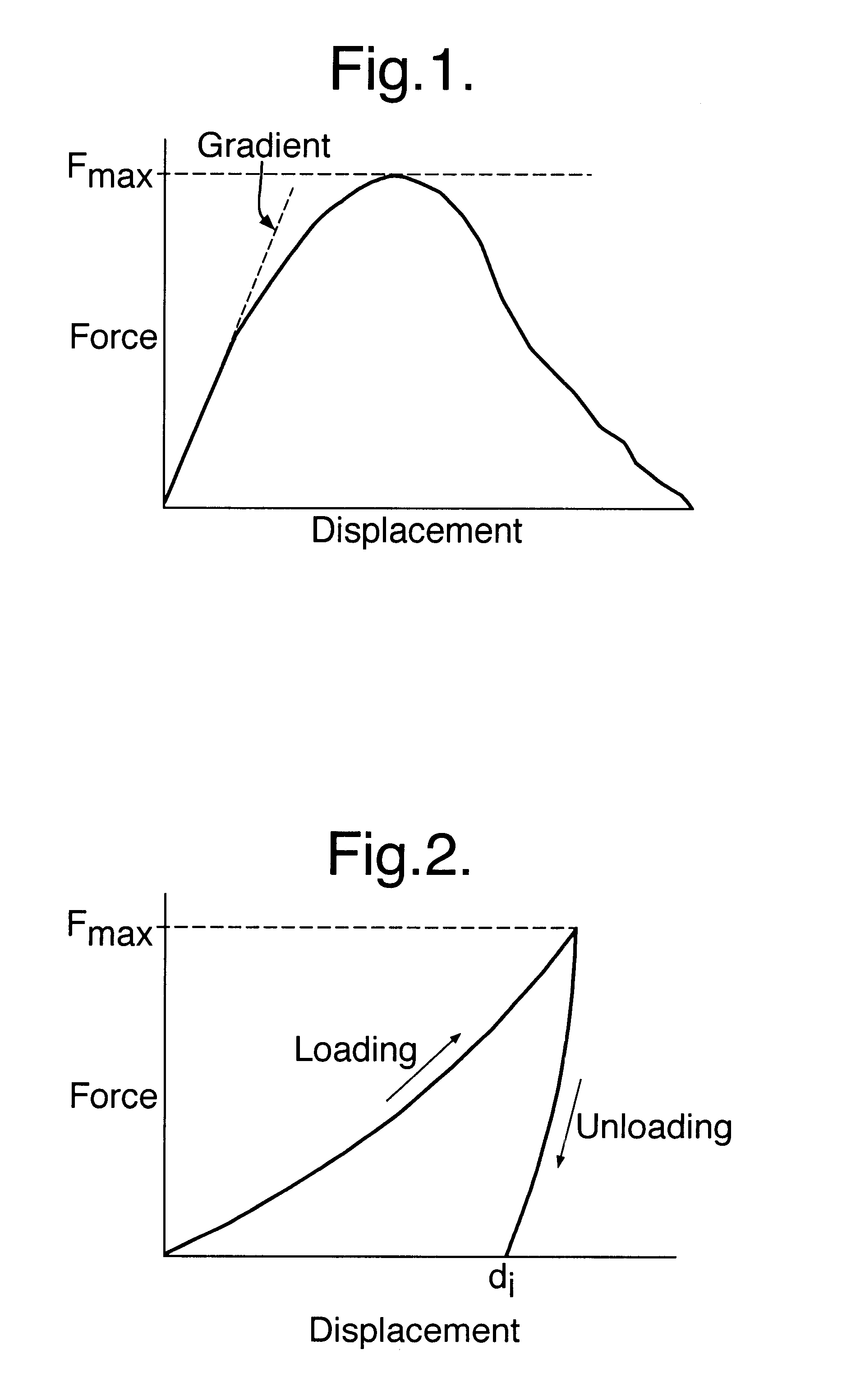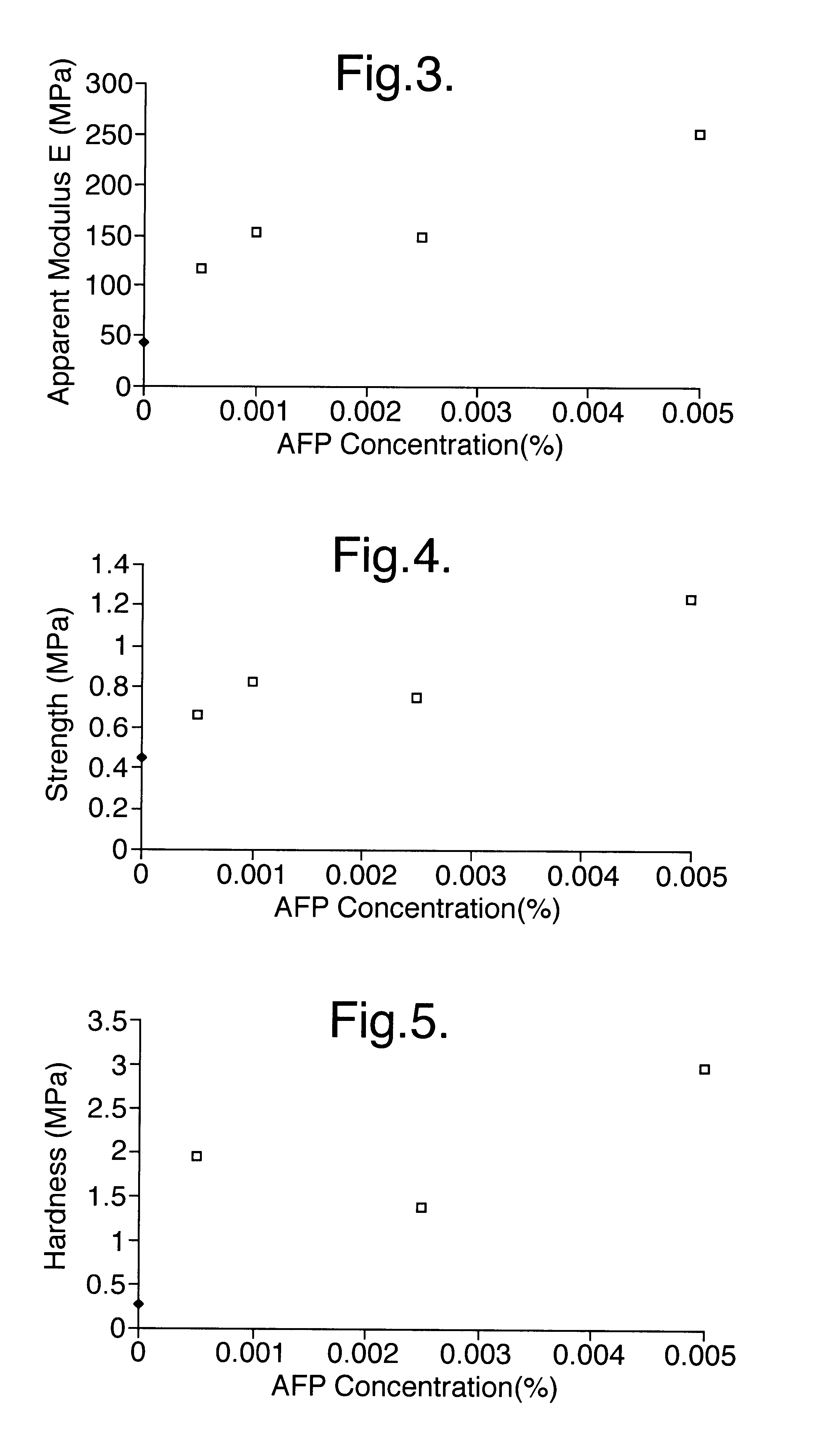Ice confection
a technology of ice cream and confections, applied in confectionery, food science, sweetmeats, etc., can solve the problems of limited ability to provide such a high degree of novelty and interest to products
- Summary
- Abstract
- Description
- Claims
- Application Information
AI Technical Summary
Benefits of technology
Problems solved by technology
Method used
Image
Examples
example 1
Four Point Bend Test
The standard four point bend test can be used to determine a number of mechanical properties of ice confection materials. The mechanical properties being measured are Young's modulus (apparent) and flexure strength.
In a bend test, a test piece is deformed whilst measuring the applied force and test piece deflection. A schematic data set for an ice confection is shown in FIG. 1. The apparent elastic modulus is determined by the gradient of the initial linear part of this curve.
The 4-point bend test requires production of a parallel sided rectangular bar of ice confection material. This may be obtained by any suitable means.
In this particular application the parallel sided rectangular bar of ice confection was made using aluminium moulds producing bars having the dimensions 25.times.25.times.200 mm.
a) Quiescent Frozen Ice Confections
The liquid ice confection pre-mix was poured into a mould which had been pre-cooled in a blast freezer at -35.degree. C. for at least ...
example 2
Method of determining whether an AFP possesses ice recrystallisation inhibition properties
Recrystallisation inhibition properties can measured using a modified "splat assay" (Knight et al, 1988). 2.5 .mu.l of the solution under investigation in 30% (w / w) sucrose is transferred onto a clean, appropriately labelled, 16 mm circular coverslip. A second coverslip is placed on top of the drop of solution and the sandwich pressed together between finger and thumb. The sandwich is dropped into a bath of hexane held at -80.degree. C. in a box of dry ice. When all sandwiches have been prepared, sandwiches are transferred from the -80.degree. C. hexane bath to the viewing chamber containing hexane held at -6.degree. C. using forceps pre-cooled in the dry ice. Upon transfer to -6.degree. C., sandwiches can be seen to change from a transparent to an opaque appearance. Images are recorded by video camera and grabbed into an image analysis system (LUCIA, Nikon) using a 20.times.objective. Images o...
example 3
Standard Vickers Hardness Test
The Vickers Hardness test is an indentation test that involves pushing a pyramid shaped indentor into the surface of material and recording the force applied as a function of tip displacement. Force and displacement are measured during the indentation loading cycle and the unloading cycle.
The test is described in "Handbook of Plastics Test materials" Ed. R. P. Brown, Pub. George Godwin Limited, The Builder Group, 1-3 Pemberton Row, Fleet Street, London, 1981.
The Vickers pyramid geometry is an engineering industry standard (BSi 427, 1990). It has an apex angle at the tip of 136.degree.. Hardness is determined as; ##EQU3##
where H.sub.v is the Vickers Hardness, F.sub.max is the maximum applied force (see FIG. 2) and A is the projected area of the indentation left in the material's surface. The area A is determined by assuming the indentation has the same geometry as the indentor that formed it, i.e. a Vickers pyramid, and therefore the projected area can b...
PUM
 Login to View More
Login to View More Abstract
Description
Claims
Application Information
 Login to View More
Login to View More - R&D
- Intellectual Property
- Life Sciences
- Materials
- Tech Scout
- Unparalleled Data Quality
- Higher Quality Content
- 60% Fewer Hallucinations
Browse by: Latest US Patents, China's latest patents, Technical Efficacy Thesaurus, Application Domain, Technology Topic, Popular Technical Reports.
© 2025 PatSnap. All rights reserved.Legal|Privacy policy|Modern Slavery Act Transparency Statement|Sitemap|About US| Contact US: help@patsnap.com



